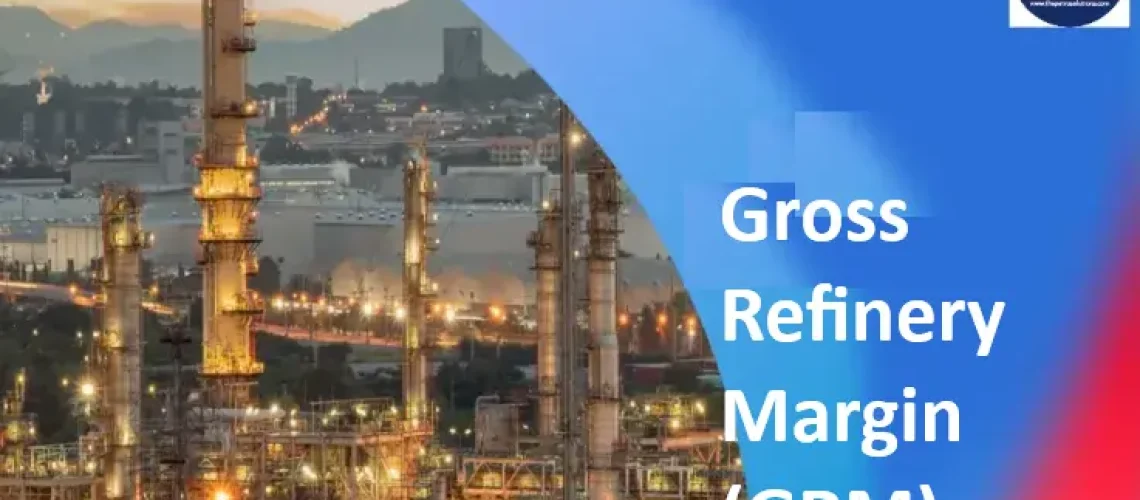Gross Refinery Margin (GRM), also known as Gross Processing Margin, is a key performance indicator in the refining industry. It represents the difference between the value of petroleum products produced by a refinery and the cost of the crude oil used to produce them. Essentially, it measures the profitability of refining operations before accounting for operational expenses.
Basic Formula: Gross Refinery Margin=Total Value of Products−Cost of Crude Oil
Steps to Calculate GRM
1. Determine the Quantity and Value of Refined Products
- List of Products: Identify all the refined products produced (e.g., gasoline, diesel, kerosene, fuel oil, LPG, etc.).
- Quantity Produced: Measure the volume or mass of each product produced over a specific period.
- Product Prices: Obtain the market selling price for each product, preferably on the same basis (e.g., per barrel, per metric ton).
Calculate Total Product Value: Total Product Value=∑(Quantity of Product (i) × Price of Product (i)
2. Determine the Cost of Crude Oil
- Quantity of Crude Oil Processed: Measure the total amount of crude oil refined over the same period.
- Crude Oil Price: Obtain the purchase price of the crude oil, on the same basis as product prices.
- Calculate Total Crude Oil Cost, Total Crude Oil Cost=Quantity of Crude Oil Processed × Price of Crude Oil
3. Calculate Gross Refinery Margin
GRM=Total Product Value−Total Crude Oil Cost
Example Calculation for GRM
- Crude Oil Processed: 100,000 barrels per day (bpd)
- Crude Oil Price: $60 per barrel
- Products Produced and Prices:
- Gasoline: 40,000 bpd at $80 per barrel
- Diesel: 30,000 bpd at $75 per barrel
- Jet Fuel: 10,000 bpd at $78 per barrel
- Fuel Oil: 15,000 bpd at $50 per barrel
- LPG: 5,000 bpd at $45 per barrel
Step 1: Calculate Total Product Value
Total Product Value = (40,000×$80) + (30,000×$75) + (10,000×$78) + (15,000×$50) + (5,000×$4)
= $ 7,205,000 per day
Step 2: Calculate Total Crude Oil Cost
Total Crude Oil Cost=100,000×$60=$6,000,000 per day
Step 3: Calculate GRM
GRM=$7,205,000−$6,000,000=$1,205,000 per day
Alternatively, GRM can be expressed per barrel of crude processed, for the refinery having capacity of 100, 000 barrels per day.
GRM per barrel= $1,205,000/100,000 =$12.05 per barrel
Factors Affecting GRM
- Crude Oil Prices:
- Higher crude oil prices increase feedstock costs, potentially reducing GRM.
- Refineries may benefit if product prices rise faster than crude prices.
- Product Slate and Yields:
- The proportion of high-value products (e.g., gasoline, diesel) affects revenue.
- Refinery configuration and complexity determine product yields.
- Market Demand and Product Prices:
- Seasonal demand fluctuations can impact product prices.
- Global economic conditions affect product pricing.
- Operational Efficiency:
- Higher throughput and better energy efficiency can improve GRM.
- Minimizing downtime and optimizing processes enhance margins.
- Feedstock Quality:
- Heavy or sour crudes may be cheaper but require more complex processing.
- Ability to process various crude types can offer cost advantages.
Additional Considerations
- Net Refinery Margin:
- Subtracts operating expenses from GRM to assess actual profitability.
- Operating expenses include labor, maintenance, energy costs, chemicals, etc.
- Margin per Unit:
- GRM is often reported per barrel of crude processed or per ton.
- Allows comparison between refineries of different sizes.
- Complexity and Nelson Complexity Index:
- More complex refineries can process heavier crudes and produce more high-value products.
- Complexity affects both capital and operating costs.





